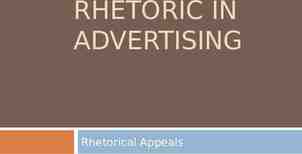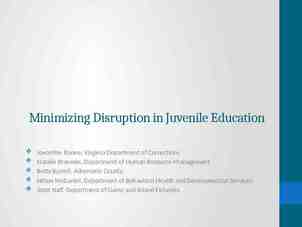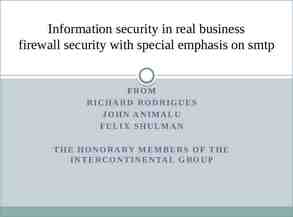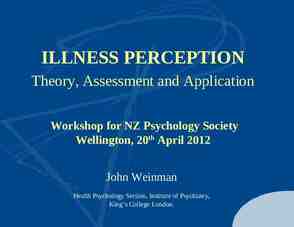Top tips for the NEA Literature Review Andy Owen
13 Slides551.25 KB

Top tips for the NEA Literature Review Andy Owen

What is a literature review? ‘Literature review’ is an academic way of saying that you should look at a range of geographical books, websites or journals when you are researching your NEA. Then, when you write up your report, you must acknowledge any of these sources you have used. An effective literature review will prove that you have a wider theoretical understanding of the geography that underpins your research. For example, if your NEA is about Changing Places you need to show that you understand one or more of the statements that are made in the specification and that are widely accepted as true. For example, you may need to show that you understand why: regeneration is often contested by local people governments use placemaking to attract investment Informal representations of a place differ – for example, in different media. Your literature review will prove that you understand how these ideas are discussed by geographers. Hopefully, your fieldwork research will show whether or not these generalisations are true in the specific place you are investigating.

1. Refer to literature during the introduction The most obvious place to refer to geographical literature is during the introduction of your NEA. You can use literature to: Provide some context for the place where you will carry out the research Give an overview of geographical theory / generalisation /concept / process that you will be investigating through the NEA. Source: Andy Owen (2019) A Level Geography Independent Investigation. Insight & Perspective

Using literature in the introduction To research Place context To research geographical context you might use you might use Coasts example: Investigating coastal landforms at Blakeney Point, Norfolk. A paper that describes the landscape character of the Norfolk Coast, downloaded from North Norfolk District Council. A textbook that describes the theory of constructive and destructive waves and the processes that create depositional landforms at the coast. Urban example: Investigating gentrification in Stokes Croft, Bristol. A paper that describes the character of the Stokes Croft Conservation Area, downloaded from Bristol City Council. A textbook that describes how other areas of the UK have been changed by the process of gentrification. An academic paper that describes the stages of gentrification in a US city. A newspaper article about how gentrification is making Stokes Croft a trendy place in which to live.

2. Refer to literature throughout the NEA The most successful NEAs refer to geographical literature throughout the report. You can use literature to: set the scene in the introduction justify your sampling strategy and data collection methods by referring to fieldwork books link back to the theoretical geography when you present and analyse your data. For example, ‘My graph shows this which supports the theory that as discussed in [name of source]’ provide a neat conclusion to your report, for example, ‘The text book [name of source] suggests that the process works like this However, what I actually found in my research was ’

3. Use more than one source Basic reports make use of one source – usually a textbook or Wikipedia Better reports use a range of sources that might include textbooks, newspapers, journals, or reports from local government or a nongovernmental organisation such as the Runneymede Trust Great reports make use of academic journals The specifications don’t tell you how many pieces of literature you need to read but a rule-of-thumb would be to use a textbook plus at least two more sources – so three pieces of literature is enough.

4. Use academic literature You may be able to find a suitable academic source by using a specialised search engine such as Google Scholar. Academic journals are a good source for your literature review but they: can be difficult to find tricky to understand so, don’t worry if you don’t use one.

An example of academic literature One academic geographer who famously wrote about Changing Places and the concepts of globalisation and identity was Doreen Massey. Click on the link below to read ‘A Global Sense of Place’ written by Doreen Massey in 1991. An extract is included in the box on the right. http://www.aughty.org/pdf/global sense place.pdf TASK: Why it is important to recognise that change creates conflict and how could we investigate this through NEA? a) Identify groups of people (stakeholders or players) who may have differing views on change in your local place. b) What might you ask them? c) How could you make sure that you get a balance of views from across these groups? ‘Third, clearly places do not have single, unique 'identities'; they are full of internal conflicts. Just think, for instance, about London's Docklands, a place which is at the moment quite clearly defined by conflict: a conflict over what its past has been (the nature of its 'heritage'), conflict over what should be its present development, conflict over what could be its future.’ Source: A Global Sense of Place, Doreen Massey, 1991

5. Be realistic about what you can achieve Some students write a long literary review – as many as 1,500 words with reference to ten or more sources of information. This may look great – but actually its out of proportion and unnecessary. Your whole NEA should only be 3,000-4,000 words long so if you have written over 1,000 words when reviewing the books and articles you have read in your background reading it is almost certainly too much. On the other hand, showing that you understand the geographical theories, concepts, or processes that underpin your investigation is an important element of your report. So a good report deals with the literature briefly in the introduction and then continues to make references to it in other places in the report whenever relevant.

6. Use newspapers to find opinions about geographical issues Newspapers sometimes provide interesting points of view in their editorial comments. Be aware that newspapers tend to lean to either ‘left’ or ‘right’ in British politics. The way that news is reported may reflect these leanings. Source of diagram: https://yougov.co.uk/topics/po litics/articles-reports/2017/03/ 07/how-left-or-right-wing-areuks-newspapers

7. Evaluate the source Think carefully about the source. Can the literature be trusted? Could the source be considered to be biased in anyway? Source: Andy Owen (2019) A Level Geography Independent Investigation. Insight & Perspective

In summary You should refer to literature during the introduction to your NEA report If you want to impress, refer to literature sources throughout your NEA You should use more than one source Use academic literature if you can – but don’t worry if you can’t Be concise when writing up your literature review and ensure it links to the geography of your investigation and your findings Use newspapers to find opinions Evaluate whatever source you use – especially if it’s a newspaper. You should begin to read literature around the topic of your NEA as soon as you have decided on your investigation’s title. So you may need to get started soon!

About Andy Owen Andy Owen has written several books about fieldwork. Andy is also an assessment expert and experienced senior moderator. His book, A Level Geography Independent Investigation, won a prestigious Geographical Association award. The book is published by Insight and Perspective. 13






